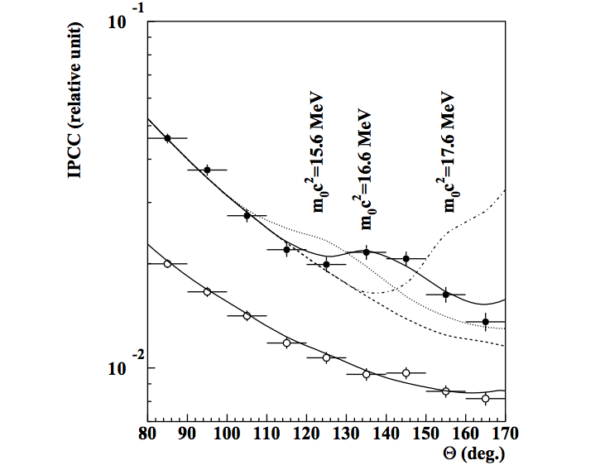"The new claim now is [a] boson with a mass of 16.7 MeV. But they don’t say anything about what went wrong in their previous claims and why we should not take those claims seriously." -Oscar Naviliat Cuncic
Everyone knows that the Standard Model of particle physics cannot be all there is. It does a fantastic job of describing the known particles and interactions, but many mysteries remain, including the origin of the matter-antimatter asymmetry, the existence of dark matter and dark energy, the origin of the interaction strengths of the particles, and why they have the mass values that they do, among many others. Perhaps there are new fundamental particles and new fundamental forces out there, if only we can find them.
 The decay tracks of unstable particles in a cloud chamber, which allow us to reconstruct the original reactants. Image credit: Wikimedia Commons user Cloudylabs, under a c.c.a.-by-s.a.-3.0 license.
The decay tracks of unstable particles in a cloud chamber, which allow us to reconstruct the original reactants. Image credit: Wikimedia Commons user Cloudylabs, under a c.c.a.-by-s.a.-3.0 license.
Sometimes, clues come in the most unlikely of places. Investigating the excited state decay of Beryllium-8, a Hungarian team of researchers found a 6.8-sigma result indicating a potential new particle, a tremendous surprise to the physics community. But will it hold up to more scrutiny and independent confirmation?
 The best-fit for a new particle given the experimental results of the Hungarian team is a new particle of mass 17 MeV/c^2. Image credit: A.J. Krasznahorkay et al., 2016, Phys. Rev. Lett. 116, 042501.
The best-fit for a new particle given the experimental results of the Hungarian team is a new particle of mass 17 MeV/c^2. Image credit: A.J. Krasznahorkay et al., 2016, Phys. Rev. Lett. 116, 042501.
Go get the scoop on the best we know (so far) on this week's Ask Ethan!
